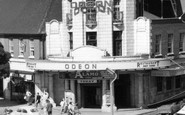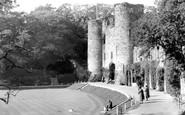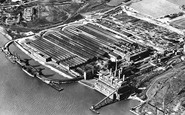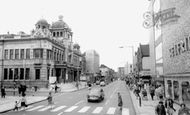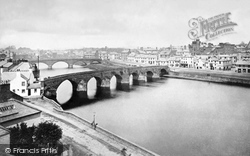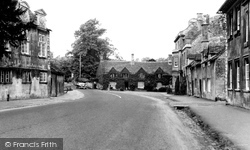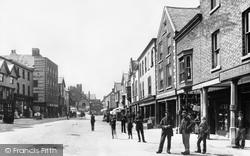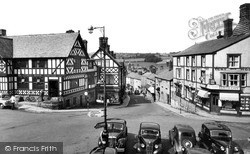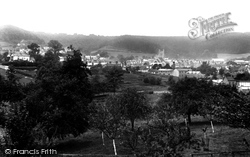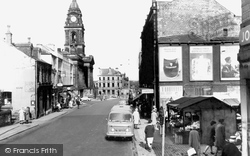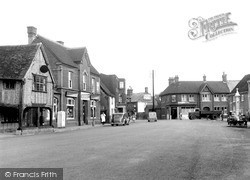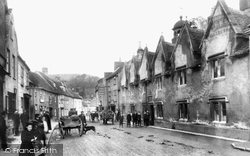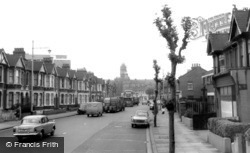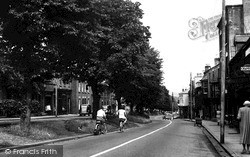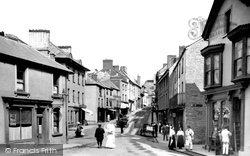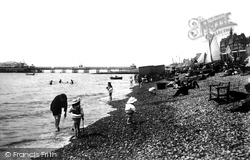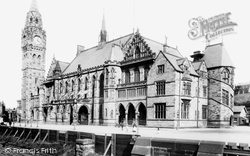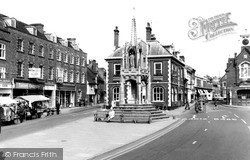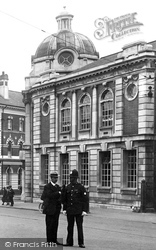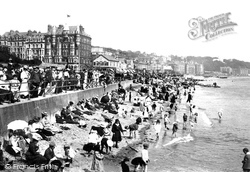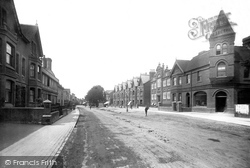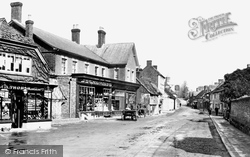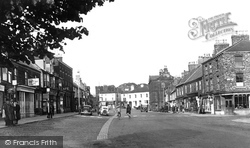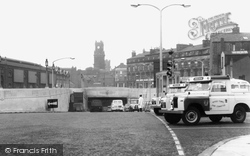Places
26 places found.
Those places high-lighted have photos. All locations may have maps, books and memories.
- Town End, Derbyshire
- Town End, Buckinghamshire
- Town's End, Somerset
- Towns End, Dorset
- Town End, Merseyside
- Town End, Cambridgeshire
- Town's End, Buckinghamshire
- West End Town, Northumberland
- Bolton Town End, Lancashire
- Kearby Town End, Yorkshire
- Town End, Cumbria (near Grange-Over-Sands)
- Town End, Cumbria (near Bowness-On-Windermere)
- Town End, Yorkshire (near Huddersfield)
- Town End, Yorkshire (near Wilberfoss)
- Town End, Cumbria (near Appleby-in-Westmorland)
- Town's End, Dorset (near Melbury Osmond)
- Town's End, Dorset (near Swanage)
- Town End, Cumbria (near Ambleside)
- Town End, Cumbria (near Lakeside)
- Town End, Cumbria (near Kirkby Lonsdale)
- Town End, Cumbria (near Ambleside)
- Town's End, Dorset (near Bere Regis)
- West-end Town, South Glamorgan
- Townend, Derbyshire
- Townend, Strathclyde (near Dumbarton)
- Townend, Staffordshire (near Stone)
Photos
23 photos found. Showing results 1,141 to 23.
Maps
195 maps found.
Books
3 books found. Showing results 1,369 to 3.
Memories
3,719 memories found. Showing results 571 to 580.
Disco Days
I was 6 I think, I and my sister would go to Saturday morning pictures, then, about 11.30, go to Top Rank and would disco dance the Saturdays away. I remember I would either have a cold glass of milk, because the milk machine was lit ...Read more
A memory of Watford in 1972 by
Growing Up In Post War Harrow Weald
I lived at 20 Silver Close, Harrow Weald from 6 weeks old in 1941 until I left for Australia in 1961. I atended Harrow Weald Infants School from 1946, the old building was opposite the bus garage in the ...Read more
A memory of Harrow Weald in 1941 by
The Castle Lawn
I have a clearer copy of this photo in the book on Sevenoaks and Tonbridge and have studied it with a magnifying glass. I was one year old in 1951 (and according to my parents, already walking at 9 months). The posture of the ...Read more
A memory of Tonbridge by
Living In Binfield 1946 1971
I moved to Binfield with my parents Rose and Cyril Richardson and my brother Brian in 1946. We lived in Rose Hill at a house called “Athlone”. It isn’t there any more, it was demolished and six houses built on the ...Read more
A memory of Binfield by
Rocking In The 60s
On the left of the photo is Woolworths, above which were flats - including one where the rock star/ wannabe MP Screaming Lord Sutch lived for a while. Another Rocker lived in South Harrow - Johnny Kidd (and the Pirates). I ...Read more
A memory of South Harrow in 1965 by
Our Boys Cafe Dock Road Tilbury
When I was six, I moved into 'Our Boy's Cafe' with my mother and grandfather. My uncle, aunt and cousin also lived with us in the accommodation above. It was the last cafe of many along Dock Road, Tilbury, so we had ...Read more
A memory of Tilbury in 1948 by
Convent Of The Visitation Bridport Dorset
CHAPTER TWO School Years - Convent of the Visitation 1939-1945 One’s school years leave an indelible impression on one for good or bad. My views over these years in this regard, have modified ...Read more
A memory of Bridport in 1940 by
Hummed To Sleep By A Factory
We used to live on what was called The Avenues on the Rylands estate. This was situated behind the Princess shopping parade, so called after the name of the local flea pit where all the kids went to Saturday morning ...Read more
A memory of Dagenham in 1961 by
I Was One Years Of Age In 1965
Good static shot, black & white (b&w), no doubt Ilford film, the best b&w in the world. I was 1 years of age having been born in 1964 about two or three roads away from where this shot was taken, it's ...Read more
A memory of Ilford in 1965
Beach
I was born in Torquay in June 1954 in Shrublands Hospital (can anybody remember that hospital, it was in the Warberrys). I left Torquay when I was 23 and came to live in London, my heart is still there. Who knows, I might retire back there. ...Read more
A memory of Torquay in 1860 by
Captions
5,054 captions found. Showing results 1,369 to 1,392.
The town is a little disappointing - it is a mix of Rothschild fake timber-framing and earlier buildings. In this view the town is en fete for Queen Victoria's Diamond Jubilee.
Dumfries itself became a royal burgh in the 12th century, but the two towns were not officially amalgamated until 1929.
Like many other Cotswold towns, Burford's fortunes were founded on wool, but leather and paper making were also important industries.
Fortunately for us, we can pore over their dress - and demeanour - in this image of Victorian Denbigh.
The word callis means almshouse or hospice, and possibly derives from the name Calais. St Peter's Church was 'pulled down' in 1560, and this building was built in 1863.
The mock-Tudor building seen here gives little indication of the real timber-framed buildings that remain in the town, although most would have been destroyed when Owain Glyndwr proclaimed himself Prince
As well as the tower of St James' church, a number of industrial chimney stacks punctuate the town skyline, hinting at Dursley's manufacturing past.
Looming over the town is the tower of the town hall, clearly more than a little influenced in its design by its more prestigious neighbour at Leeds.
Once an important market town, Shefford was blighted this century by through traffic; its central T-junction was a bottleneck until the town was recently by-passed.
Here we see the Parish Church as we look from the High Street through Middle Row, part of the 'old town' of Ashford.
On the far side of the street are the almshouses bequeathed to the town by the former Sheriff of London Hugh Perry, who held the office in 1632.
Here we approach East Ham's town centre along the busy North Circular Road, which seems in places merely a casual linkage of suburban roads.
Newnham is a delightful, Severnside town today, just as it was when this scene was captured.
Brecon stands at the confluence of the River Usk and the smaller Honddu. The town can be confusing for the visitor, as not only has it two rivers, but also two High Streets.
The centrepiece of Brighton was and remains the extraordinary Pavilion or seaside palace.
Plans were requested for a Town Hall costing about £20,000, but by its opening on 27 September 1871 the bill was £160,000. W H Crossland designed the 88ft-long building.
This photograph of the 15th-century Market Cross shows just how far the original concept of a market town has moved in the 20th century.
IN SPITE of the depression, the town's population grew to 36,404 in 1901, and the town grew richer.
On the south side are the handsome stone piers, and a deep harbour cutting off most of the town from the cliffs of Douglas Head.
This excellent view captures the eastward expansion of the town in the late 19th century very well.
Frith's Victorian photographer was in the lane leading to the abbey gateway, and looking across the Market Place to what is now undoubtedly the finest building in Abingdon: the Town Hall.
This small town grew up on the course of the Roman road from London to Chichester, later known as Stane (or stone paved) Street.
Here we have a clearer view of the tall Town Hall building to the right, and beyond it lies the premises of the National Provincial Bank.
This was the first road tunnel under the River Mersey, and was opened by King George V and Queen Mary in July 1934.
Places (26)
Photos (23)
Memories (3719)
Books (3)
Maps (195)

